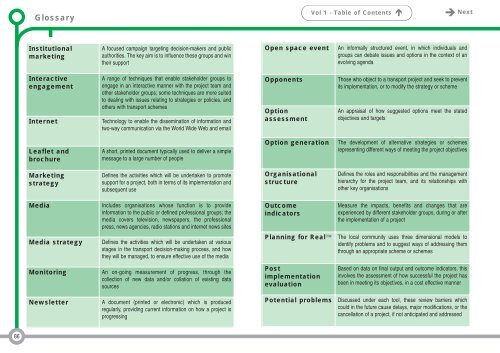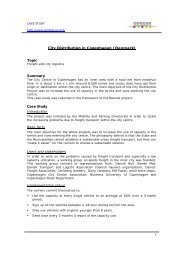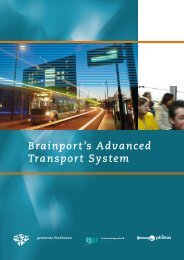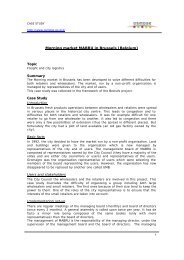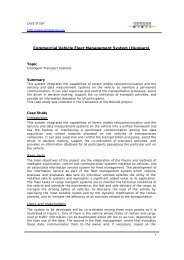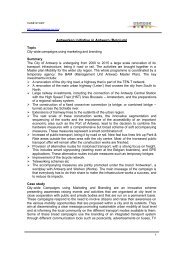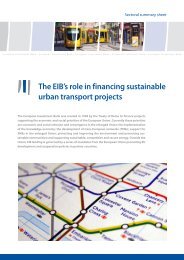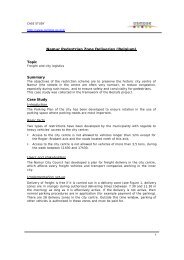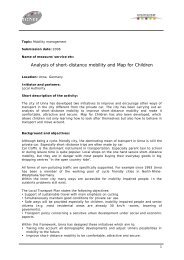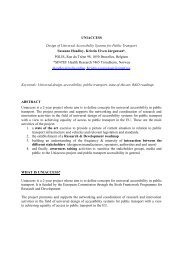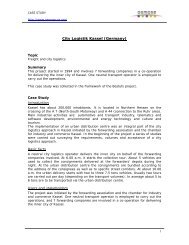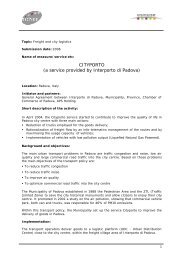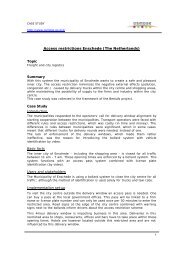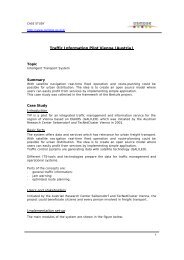Successful transport decision-making - Osmose
Successful transport decision-making - Osmose
Successful transport decision-making - Osmose
You also want an ePaper? Increase the reach of your titles
YUMPU automatically turns print PDFs into web optimized ePapers that Google loves.
Glossary<br />
Vol 1 - Table of Contents <br />
Next<br />
Institutional<br />
marketing<br />
A focused campaign targeting <strong>decision</strong>-makers and public<br />
authorities. The key aim is to influence these groups and win<br />
their support<br />
Open space event<br />
An informally structured event, in which individuals and<br />
groups can debate issues and options in the context of an<br />
evolving agenda<br />
Interactive<br />
engagement<br />
Internet<br />
A range of techniques that enable stakeholder groups to<br />
engage in an interactive manner with the project team and<br />
other stakeholder groups; some techniques are more suited<br />
to dealing with issues relating to strategies or policies, and<br />
others with <strong>transport</strong> schemes<br />
Technology to enable the dissemination of information and<br />
two-way communication via the World Wide Web and email<br />
Opponents<br />
Option<br />
assessment<br />
Those who object to a <strong>transport</strong> project and seek to prevent<br />
its implementation, or to modify the strategy or scheme<br />
An appraisal of how suggested options meet the stated<br />
objectives and targets<br />
Leaflet and<br />
brochure<br />
A short, printed document typically used to deliver a simple<br />
message to a large number of people<br />
Option generation<br />
The development of alternative strategies or schemes<br />
representing different ways of meeting the project objectives<br />
Marketing<br />
strategy<br />
Defines the activities which will be undertaken to promote<br />
support for a project, both in terms of its implementation and<br />
subsequent use<br />
Organisational<br />
structure<br />
Defines the roles and responsibilities and the management<br />
hierarchy for the project team, and its relationships with<br />
other key organisations<br />
Media<br />
Includes organisations whose function is to provide<br />
information to the public or defined professional groups; the<br />
media covers television, newspapers, the professional<br />
press, news agencies, radio stations and internet news sites<br />
Outcome<br />
indicators<br />
Measure the impacts, benefits and changes that are<br />
experienced by different stakeholder groups, during or after<br />
the implementation of a project<br />
Media strategy<br />
Defines the activities which will be undertaken at various<br />
stages in the <strong>transport</strong> <strong>decision</strong>-<strong>making</strong> process, and how<br />
they will be managed, to ensure effective use of the media<br />
Planning for Real<br />
The local community uses three dimensional models to<br />
identify problems and to suggest ways of addressing them<br />
through an appropriate scheme or schemes<br />
Monitoring<br />
An on-going measurement of progress, through the<br />
collection of new data and/or collation of existing data<br />
sources<br />
Post<br />
implementation<br />
evaluation<br />
Based on data on final output and outcome indicators, this<br />
involves the assessment of how successful the project has<br />
been in meeting its objectives, in a cost effective manner<br />
Newsletter<br />
A document (printed or electronic) which is produced<br />
regularly, providing current information on how a project is<br />
progressing<br />
Potential problems<br />
Discussed under each tool, these review barriers which<br />
could in the future cause delays, major modifications, or the<br />
cancellation of a project, if not anticipated and addressed<br />
86


